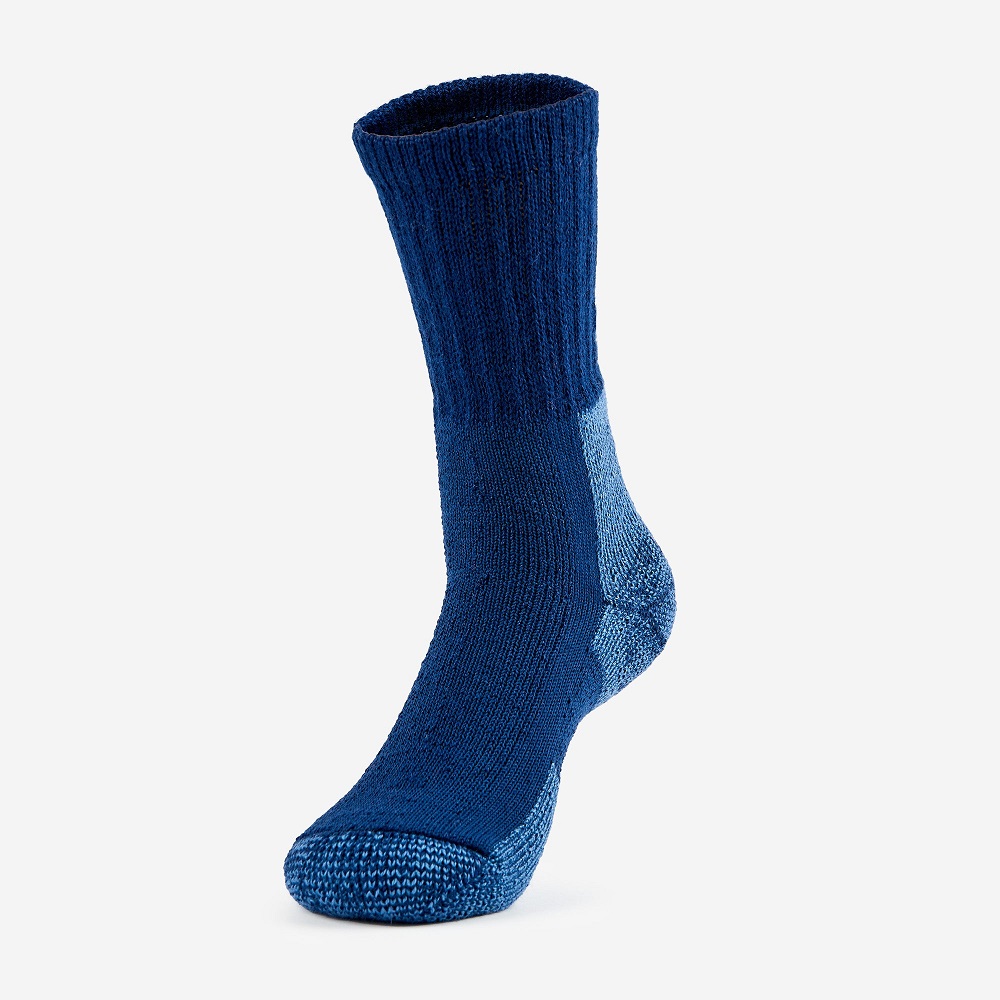Choosing the right hiking socks is as essential as selecting the right hiking boots. Your feet endure a lot during outdoor adventures, and the right pair of socks can make a significant difference in your comfort and performance. From avoiding blisters to enhancing moisture control, hiking socks are designed with specific features to support your journey. This article will explore various aspects of hiking socks, emphasizing their importance, features, types, and how to select the best pair for your adventures.
Why Hiking Socks Matter
Hiking socks play a vital role in ensuring comfort and performance while trekking. Choosing the right socks can prevent discomfort and enhance your hiking experience. These specialized socks are designed to provide stability, reduce friction, and manage moisture during long trails.
Importance of Proper Footwear on Trails
Proper footwear protects your feet and prevents injuries on uneven terrain. Hiking socks complement boots by adding extra cushioning and support. They minimize risks of blisters, irritation, and foot fatigue. Wearing quality socks ensures your feet stay safe and ready for difficult challenges.
Impact on Comfort and Performance
Comfortable hiking socks improve performance during extended hikes. Socks with moisture-wicking properties keep feet dry and reduce slipperiness inside boots. Cushioned socks absorb shocks and reduce strain on feet and joints. A good pair of hiking socks can transform tiring journeys into enjoyable adventures.
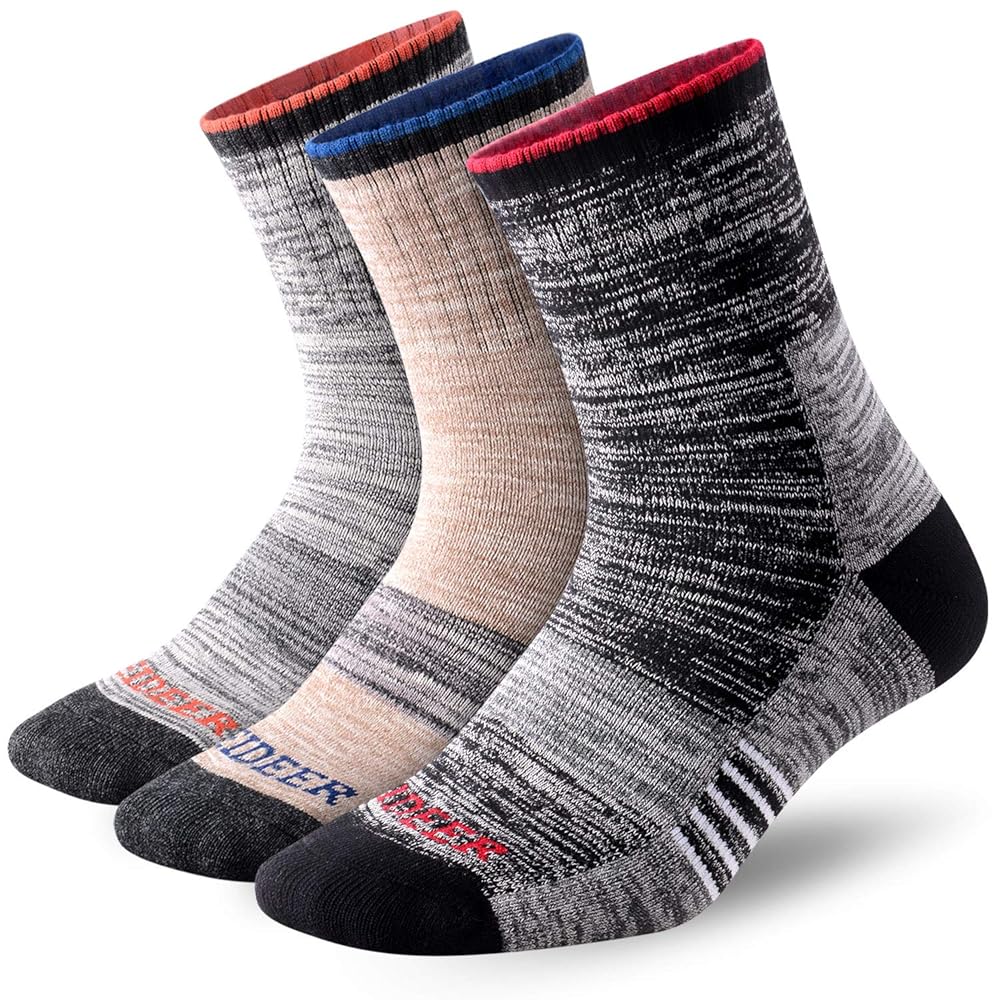
Types of Hiking Sock
Understanding the types of hiking socks is essential for a successful outdoor experience. Each type caters to specific needs, ensuring comfort and optimal performance on various trail conditions.
Lightweight vs. Heavyweight Socks
Lightweight socks are ideal for short hikes and warm weather. They are designed to be thin and breathable, minimizing sweat buildup and keeping feet cool. These socks pair well with low-cut hiking shoes or trail runners. Heavyweight socks, on the other hand, offer thicker padding and insulation. They are best suited for cold weather or rugged, long-distance hikes. Often reinforced in critical areas, they provide durability and protection during intense treks. Choosing between these types depends on the hike’s duration and environmental conditions.
Cushioning Levels and Their Benefits
Cushioning levels range from minimal to full. Minimal cushioning provides better breathability and comfort on light trails. Medium cushioning is suitable for general hiking, balancing comfort and support. Full cushioning offers maximum padding, reducing impact and fatigue on demanding terrains. Proper cushioning helps prevent soreness and improves stability while walking over rocks and dirt.
Materials Used in Hiking Socks
Hiking socks are made of materials like merino wool, synthetic fibers, and nylon blends. Merino wool excels at breathability, moisture control, and odor resistance. Synthetic fibers, including polyester, dry quickly and wick moisture effectively. Nylon adds strength and enhances durability for tough trails. Blended materials often combine benefits, offering a great mix of comfort and resilience. Choosing the right fabric ensures durability and keeps feet dry during treks.

Choosing the Right Hiking Sock
Selecting the right hiking socks is crucial for a comfortable and successful outdoor experience. The wrong socks can lead to blisters, discomfort, and ruined hikes. Here’s a guide to help you make informed choices.
Factors to Consider for Fit and Size
- Proper Fit: Choose socks that hug your feet without being too tight. A close, comfortable fit prevents movement in the sock, reducing friction and blister risks.
- Sizing: Always check size charts. Socks that are too large may bunch up, while those too small can cut off circulation.
- Boot Compatibility: Match sock thickness to your hiking boots. Thicker socks may require more room, while lighter socks fit snug in trail shoes.
- Toe Box Comfort: Test the toe area for space and no seams that rub against your toes.
Matching Socks to Hiking Conditions
- Weather Consideration: Use lightweight socks for hot climates and heavyweight options for colder conditions. Proper materials like merino wool are good for temperature control.
- Trail Type: Rugged trails call for durable socks with thicker cushioning. Smooth paths require thinner, more breathable options.
- Duration: Long hikes need socks with durability and added support, while shorter hikes can handle lighter options.
- Moisture Management: Pick socks with moisture-wicking properties to keep feet dry during wet or humid conditions.
What to Look for in High-Quality Socks
- Durable Materials: Look for merino wool or synthetic blends combining durability and comfort. These materials resist wear and tear.
- Reinforced Areas: High-quality socks have reinforced heels and toes for added strength on demanding trails.
- Odor Control: Pick socks with odor resistance for multi-day hikes.
- Anti-Blister Features: Socks with smooth seams and strategic padding help prevent blisters.
- Stretch and Retention: Ensure socks retain their shape after washing and long hikes.
Choosing the right hiking socks will keep your feet comfortable and protected, ensuring you enjoy your treks to the fullest.
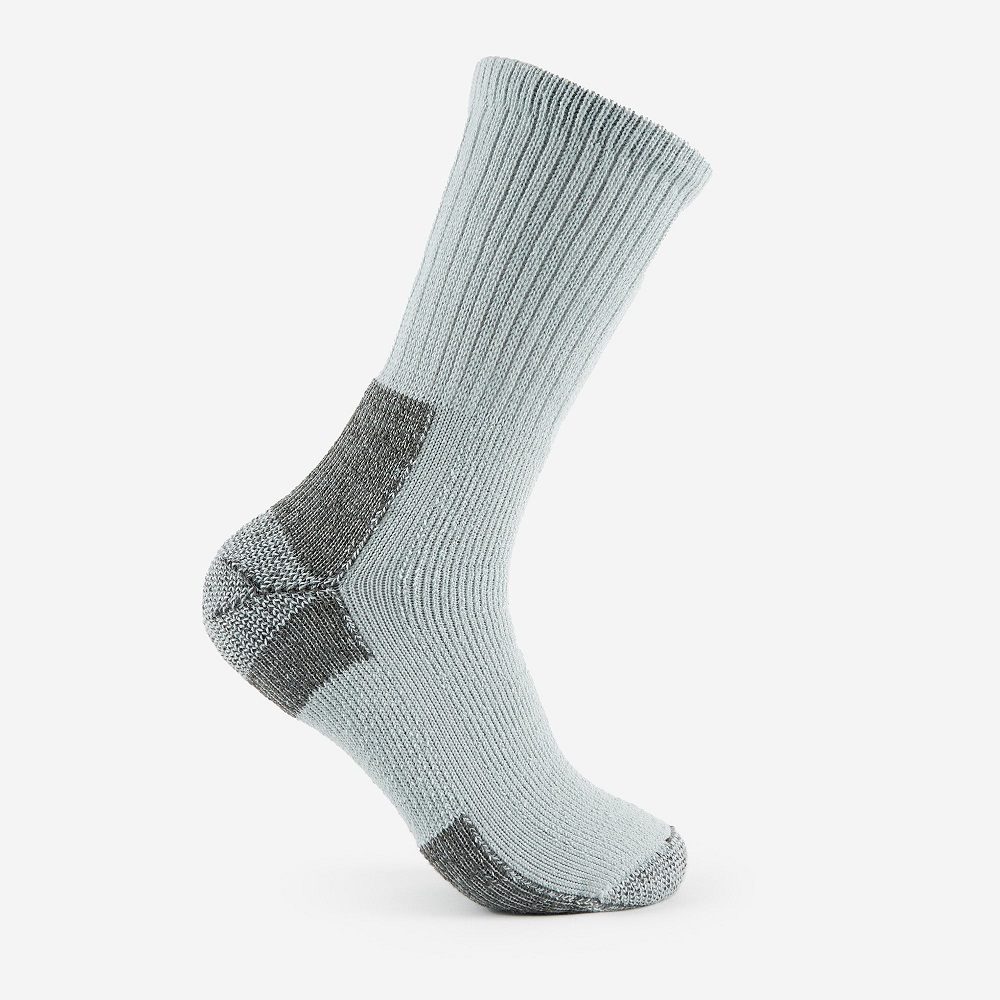
Key Features of Durable Hiking Sock
Durable hiking socks are essential for long-lasting comfort and protection on trails. Their unique features enhance performance and protect your feet, even during challenging hikes.
Reinforced Areas for Longevity
Reinforced areas, like heels and toes, provide extra strength and durability. These sections are highly prone to wear, especially on rough trails. Extra padding in these zones absorbs shocks and reduces strain. This reinforcement extends the sock’s lifespan, making it ideal for frequent hikers. When buying, check for double-layer stitching or added materials in high-wear areas.
Moisture-Wicking Properties
Moisture-wicking socks keep your feet dry by pulling sweat away from the skin. Dry feet reduce the risk of blisters and fungal infections. Materials like merino wool and synthetic fibers excel in moisture control. These materials also dry quickly, ensuring comfort in wet conditions. Look for socks with breathable fabrics to avoid sweat buildup during intense hikes.
Anti-Blister Technologies
Anti-blister features are crucial for pain-free hiking. Smooth seams and seamless designs reduce friction, preventing skin irritation. Padding in key areas minimizes rubbing and supports sensitive zones. Materials that regulate temperature also prevent blisters caused by sweaty, overheated feet. Investing in socks with these technologies ensures a more enjoyable hiking experience.
Durable hiking socks combine these features to provide reliable performance. By prioritizing these aspects, you can enhance comfort and prolong the life of your socks.
Care and Maintenance Tips for Hiking Socks
Proper care ensures your hiking socks stay durable and comfortable for many treks. Follow these tips to maintain their longevity and performance.
Washing and Drying Guidelines
- Use Cold or Warm Water: Wash socks in cold or warm water to prevent fabric damage.
- Gentle Detergent: Opt for mild, non-bleach detergents to protect the fibers and colors.
- Avoid Fabric Softeners: Softeners can reduce moisture-wicking properties; avoid using them.
- Air Dry: Air drying preserves elasticity and reduces wear from high heat.
- Machine Dry on Low Heat: If air drying isn’t possible, tumble dry on a low-heat setting.
How to Store Socks for Long-Term Use
- Keep Them Clean: Always store socks clean to prevent odors and mildew.
- Pair Socks Together: Match socks and roll them together to avoid losing one.
- Use a Dedicated Drawer: Store socks in a dry, ventilated drawer to keep them fresh.
- Avoid Compression: Do not pack socks tightly to maintain their shape and elasticity.
- Use Cedar Blocks or Sachets: Prevent pests and add a fresh scent by including cedar blocks.
Identifying Signs of Wear and Tear
- Check for Thin Spots: Thin areas indicate the sock is wearing out and may tear soon.
- Inspect Seams: Loose seams can cause discomfort and should be addressed.
- Look for Holes: Even small holes can worsen quickly and reduce support.
- Loss of Elasticity: Socks that lose their stretch may not fit properly anymore.
- Faded Material: Fading can indicate the fabric’s durability is compromised.
By following these care and maintenance tips, your hiking socks will remain reliable and long-lasting, ensuring comfort on every trail.
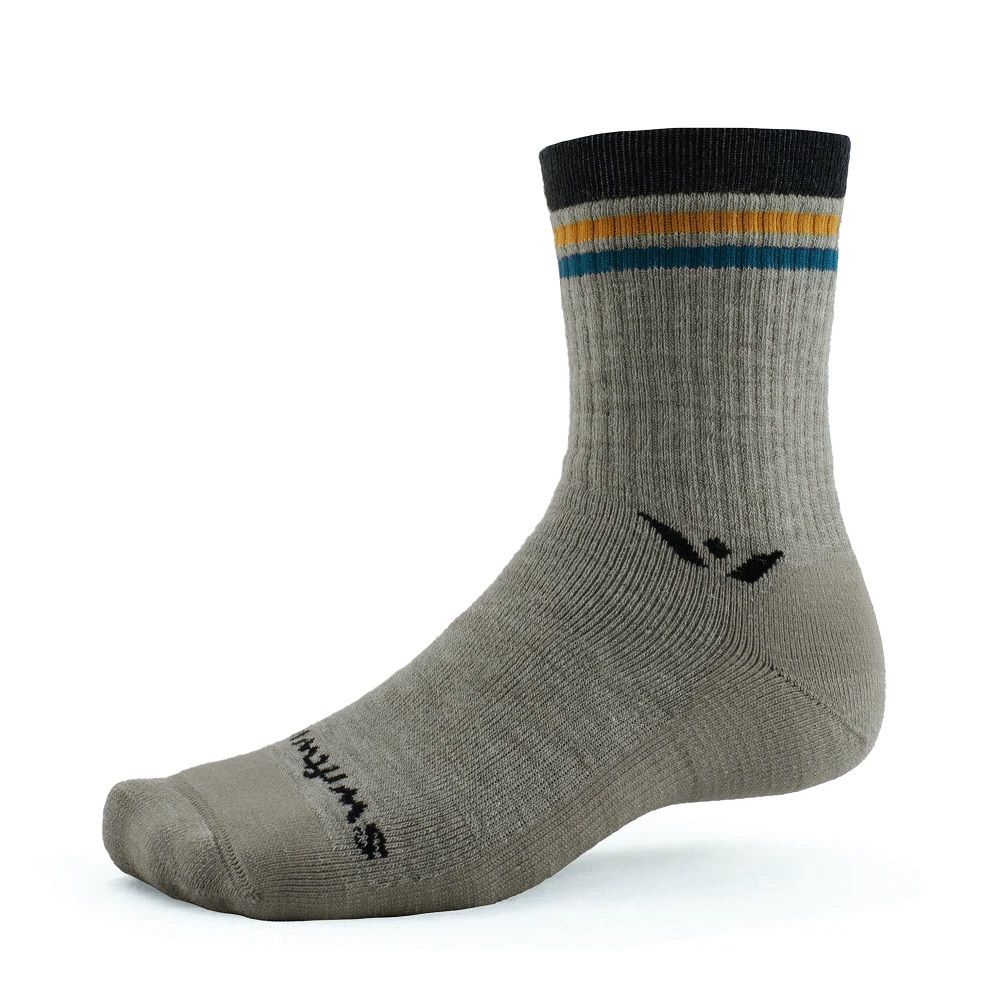
Recommended Hiking Sock Brands
Choosing the right brand can significantly enhance your hiking experience. Many companies specialize in creating comfortable and durable hiking socks. Below is a look at popular, budget-friendly, and premium brands known for quality.
Popular Brands Known for Comfort and Durability
- Smartwool: Offers excellent merino wool socks with moisture-wicking and odor resistance.
- Darn Tough: Known for durability, reinforced areas, and a lifetime warranty.
- Thorlos: Focuses on cushioning and support for long-distance comfort.
- Icebreaker: Produces lightweight, temperature-regulating socks with high-quality merino wool.
- Farm to Feet: Combines durability, comfort, and a made-in-USA commitment with premium materials.
These brands deliver socks designed for reliable performance during challenging hikes.
Budget-Friendly Options
- REI Co-op: Affordable options with good performance and durability.
- Wigwam: Durable, moisture-managing socks at accessible prices.
- Fox River: Offers durable socks with synthetic blends ideal for hiking on a budget.
- Injinji: Produces budget-friendly toe socks for optimal blister prevention.
- Kirkland Signature: Well-priced options offering decent cushioning and durability.
These brands balance affordability and quality, making them great for beginner hikers.
Premium Choices for Advanced Hikers
- FITS Socks: Known for tailored fits and exceptional comfort on long, challenging treks.
- Compression Sock Brands (CEP, Zensah): Advanced socks providing compression for better support and circulation.
- SealSkinz: Waterproof options for challenging weather and wet conditions.
- Sockwell: Combines performance with stylish designs and premium materials.
Premium brands cater to seasoned hikers seeking advanced features, comfort, and durability.
Exploring these brands will help you find socks tailored to your needs and hiking goals.
Common Hiking Sock Mistakes to Avoid
Avoiding common mistakes ensures your hiking socks provide comfort, protection, and durability on trails.
Wearing Cotton Socks
Cotton socks are a poor choice for hiking. They retain moisture and dry very slowly. Wet socks can lead to blisters, odors, and cold feet. Always opt for moisture-wicking materials like merino wool or synthetic blends. These materials keep your feet dry and comfortable during hikes.
Overlooking Sock Thickness
Sock thickness plays a crucial role in comfort and protection. Thin socks may not provide enough cushioning on rough trails. Overly thick socks can make boots tight and cause discomfort. Match sock thickness to boot fit, trail difficulty, and weather conditions. Consider medium or heavy cushioning for challenging terrains.
Ignoring Proper Fit and Material
Poorly fitting socks can cause blisters and foot pain. Socks that are too small may restrict circulation, while large socks can bunch up. Choose socks that fit snugly without slipping. Pay attention to material features like breathability, durability, and odor resistance. This ensures a more enjoyable and pain-free hiking experience.
Avoiding these mistakes will help you get the most out of your hiking socks.
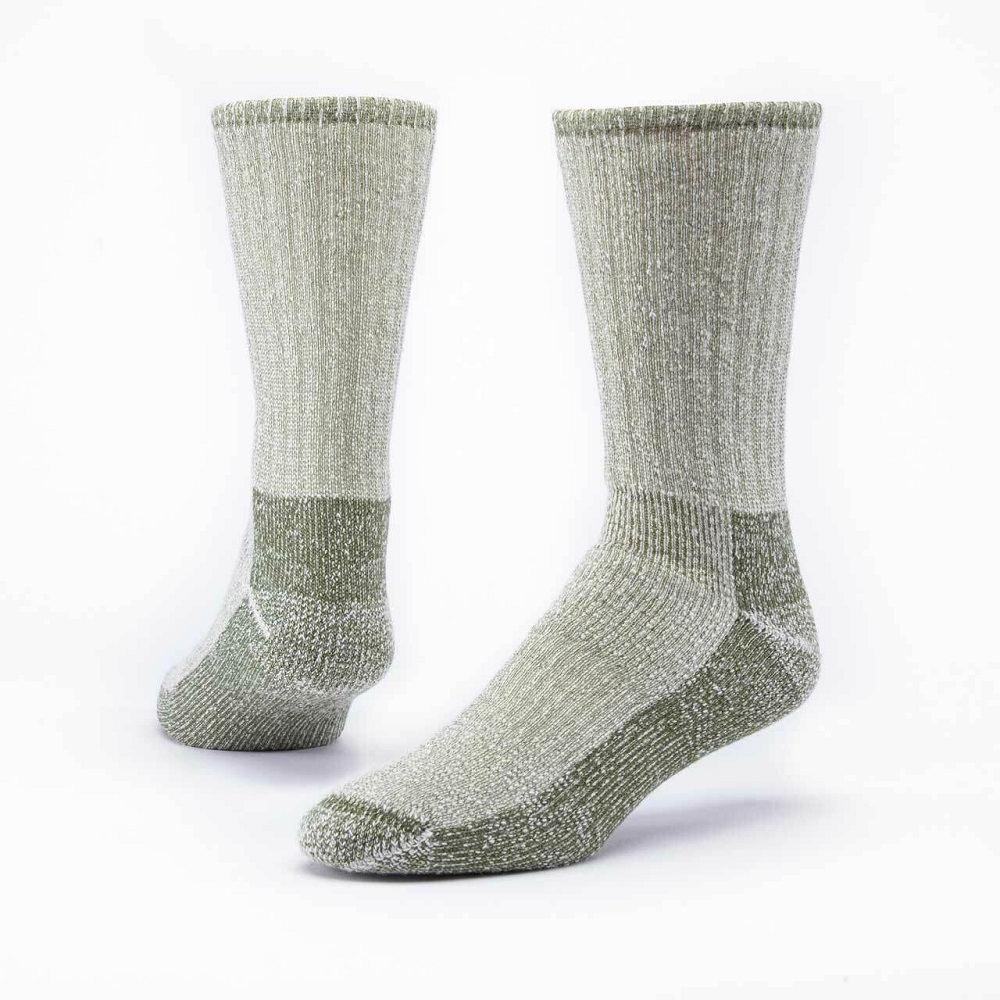
The Best Hiking Sock Brands
Darn Tough
Darn Tough is renowned for producing high-quality hiking socks. Their products combine merino wool and cushioning for maximum comfort. They also come with a lifetime guarantee, ensuring you’ll have durable socks that stand the test of time. Many hikers swear by Darn Tough socks for their incredible fit and support during long hikes.
Smartwool
Smartwool is famous for its merino wool socks that are warm, breathable, and moisture-wicking. Their designs offer targeted cushioning and seamless toes, promoting comfort on the trail. Hikers appreciate the functionality and style of Smartwool socks, making them a reliable choice for various hiking conditions.
Fox River
Fox River offers affordable and durable hiking socks designed with comfort in mind. Their range includes various materials, ensuring you find the right fit for your preferences. As a brand, they specialize in moisture management and cushioned support, making them perfect for both casual and serious hikers.
Elevate Your Hiking Experience with the Right Socks
In conclusion, hiking socks are a critical component of your outdoor gear. The right pair maximizes comfort, enhances performance, and prevents injuries, allowing you to focus on the adventure. By understanding the features, materials, and types of hiking socks available, you can make an informed choice suited to your needs.
Emphasize Comfort Over Everything
Comfort should be your top priority when selecting socks. Make sure to choose socks that provide moisture control, cushioning, and support tailored to your foot shape. The right fit can prevent blisters and discomfort on the trail, allowing you to enjoy your hike to the fullest.
Invest in Quality and Care
Investing in quality hiking socks is crucial for long-term comfort and performance. Choose between reputable brands, and don’t hesitate to try various styles to find the best match. Caring for your socks properly will extend their lifespan and maximize your investment.
Get Ready for Adventure
As you prepare for your next hiking adventure, remember the significance of high-quality hiking socks. With the right pair on your feet, you are equipped to face any trail with confidence and comfort. Lace up, hit the trails, and embrace the wonders of nature, knowing your feet are well-protected and ready for the journey ahead!
